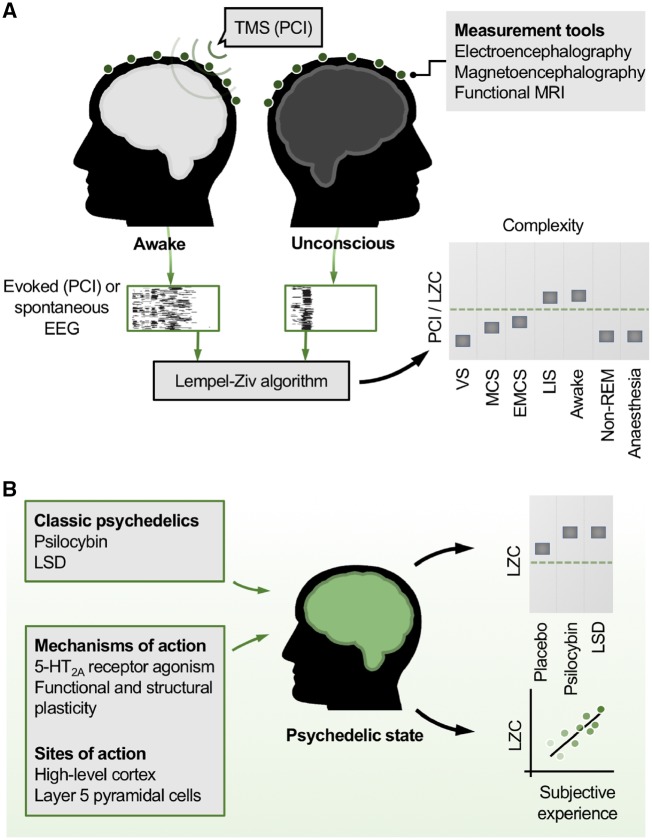Figure 1.
Brain complexity, consciousness and psychedelics. (A) Measures of brain complexity index conscious level. Empirical measures of brain complexity are high in the normal awake state and low whenever consciousness is lost. In the case of the perturbational complexity index (PCI Casali et al. 2013), a pulse of transcranial magnetic stimulation (TMS) provides a cortical perturbation and the evoked electroencephalogram (EEG) responses are recorded. Alternatively, spontaneous EEG data alone are recorded. The Lempel-Ziv algorithm, a measure of compressibility, quantifies the complexity (LZC) in the thresholded EEG data (illustrated by black and white grids). LZC values robustly index conscious level. VS = vegetative state; MCS = minimally conscious state; EMCS = emergence from MCS; LIS = locked-in syndrome; LZC = Lempel-Ziv complexity; non-REM = non-rapid eye movement sleep; PCI = perturbational-complexity index. (B) Psychedelics increase brain complexity above normal levels. Classic psychedelics increase brain complexity measures like LZC above the levels in the normal awake state. This raises the possibility that psychedelics could increase conscious awareness in patients with disorders of consciousness, where brain complexity is low. LSD = lysergic acid diethylamide.

